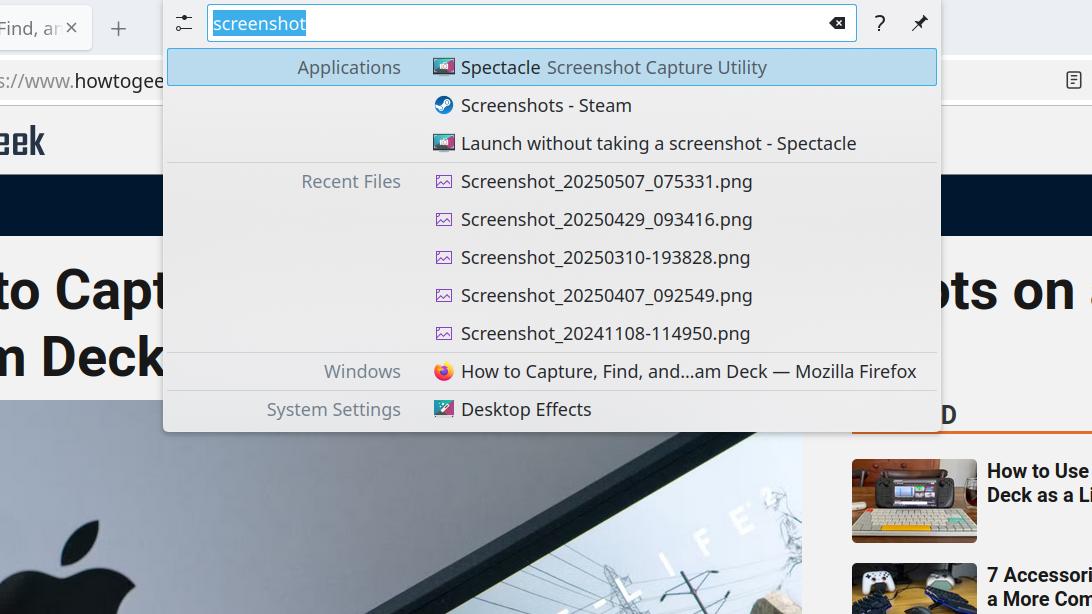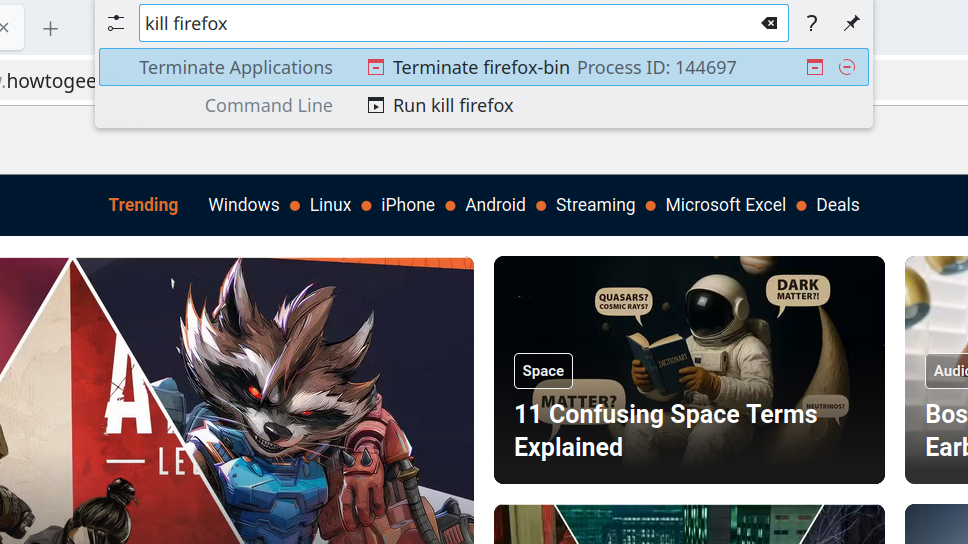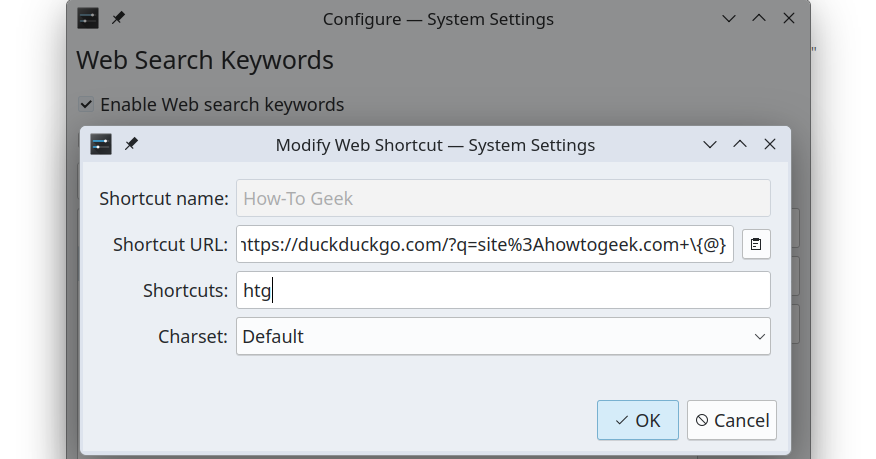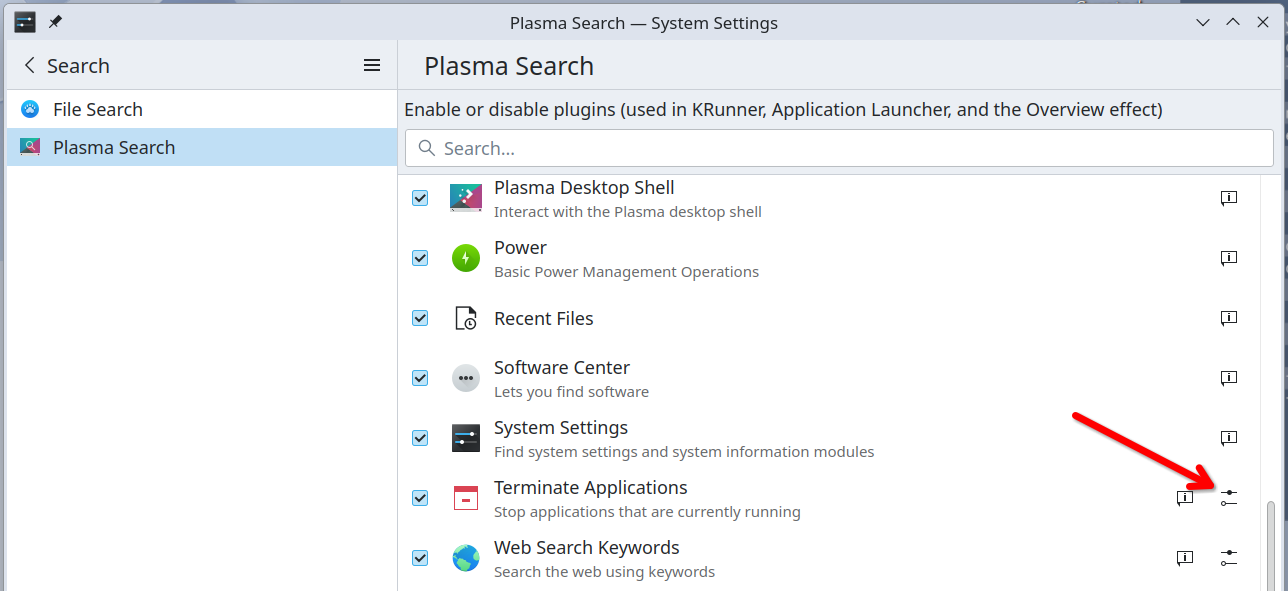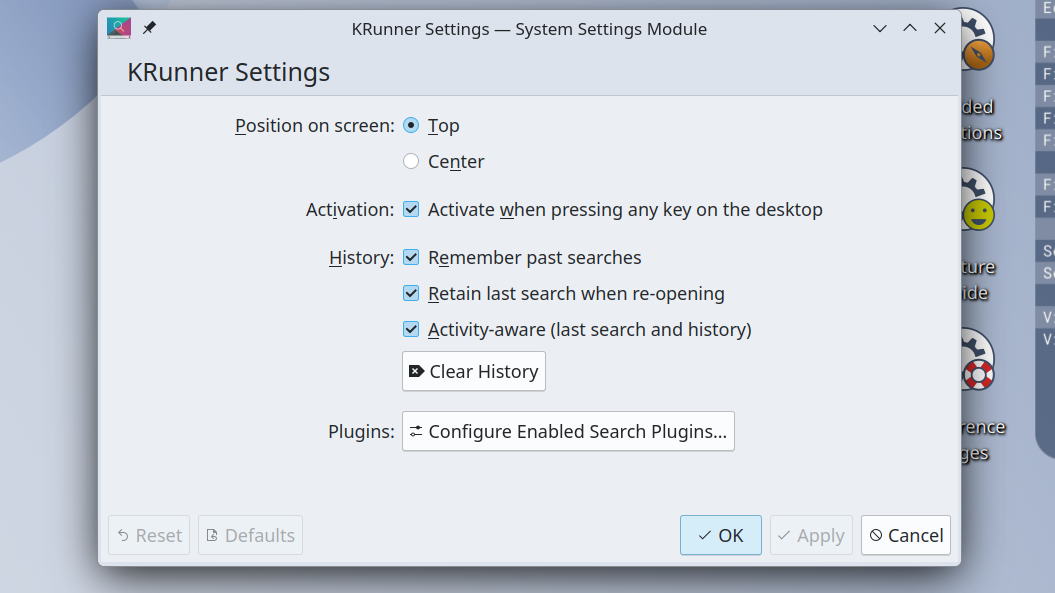Are you running Kubuntu Linux or another distro that uses the KDE Plasma desktop environment? Then you’re missing out if you aren’t taking advantage of a little search bar called KRunner.
KDE Plasma is well known as a productivity and power user-friendly desktop environment for Linux distros and FreeBSD. I’ve been using it regularly for years. In fact, right now I’m daily-driving two different versions of Plasma on both my Kubuntu Focus laptop and my desktop computer running Garuda. That’s how I ended up discovering KRunner and using it to optimize my daily workflow.
Meet KRunner, KDE’s Answer to Spotlight
KRunner is a launcher hidden in the KDE Plasma desktop environment that lets you search for all kinds of items, issue commands, and otherwise control your computer. You can bring it up at any time by hitting the Alt+Space keyboard shortcut. Start typing a search term or a command, and several options will appear. The results it lists will include applications, files, bookmarks, even browser tabs.
This will feel familiar if you know the Mac Spotlight feature, or even Windows’ PowerToys Command Palette tool. You also may already know you can do these things in Plasma’s application launcher menu. I thought it was a little redundant in that way, too, but I learned it’s better than the launcher menu in several small but important ways.
Besides its more minimalist appearance, KRunner includes a search history that you can manipulate and use for autocomplete of commands you frequently use. It also more clearly organizes results into categories of applications, windows, files, and so on.
Even if that doesn’t impress you, and you’re more comfortable using the application launcher menu, you should continue reading because they share search plugins, and you may discover some here you didn’t know about.
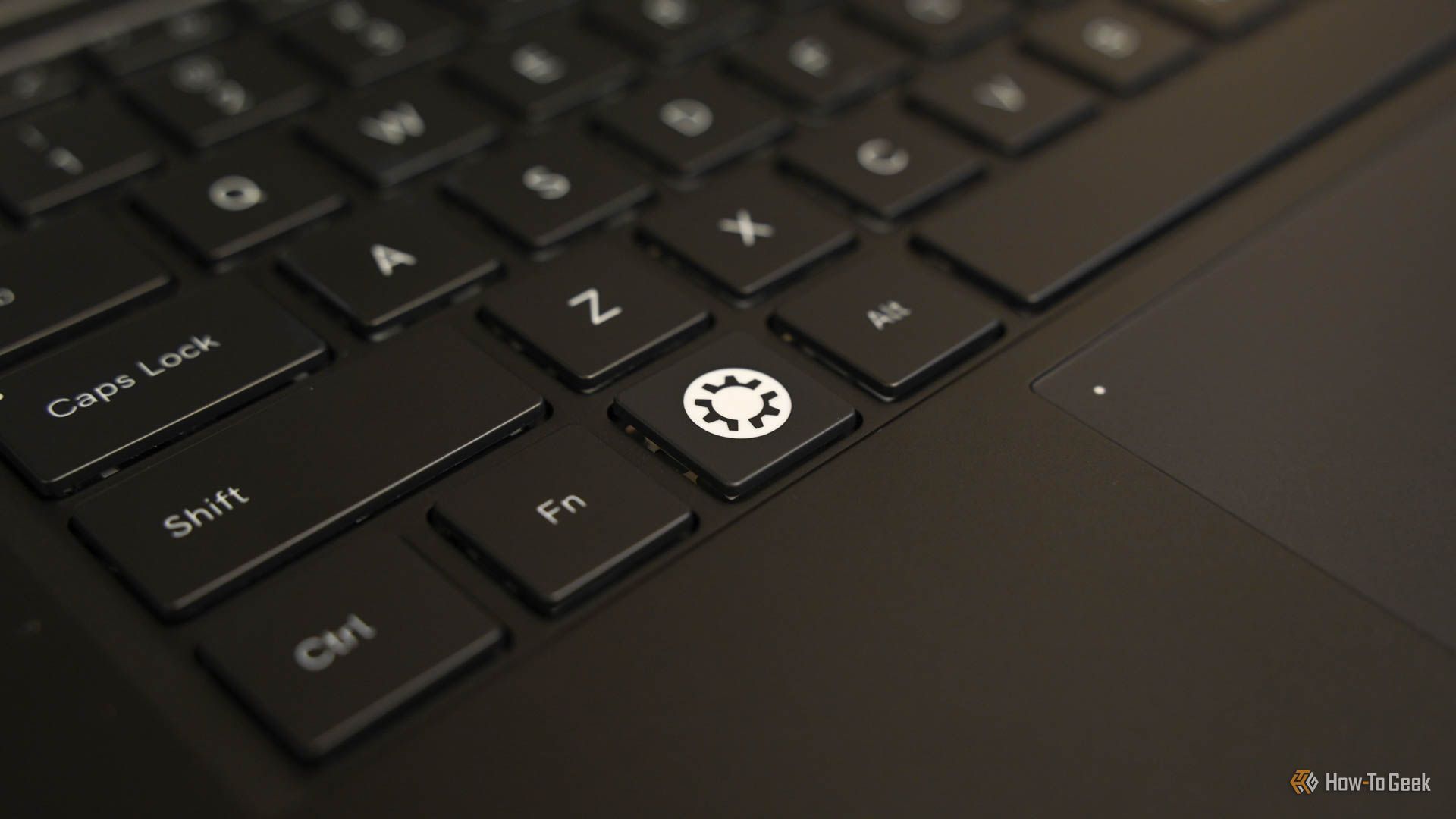
Related
10 Kubuntu Linux Keyboard Shortcuts I Use Every Day
These keyboard tricks work with any KDE Plasma desktop.
KRunner’s Best Features
Each of KRunner’s features is its own plugin that you can toggle off and on, or sometimes customize for maximum usefulness. These are some of my personal favorites.
Launch (or Kill) Any App
Like the application launcher menu, KRunner can also find applications you want to run. Just type its name, like steam, or even just a term associated with it, like games, and you’ll see it in KRunner’s search results. Use the arrow keys to reach the item you want, hit Enter, and it’ll launch.
You can also do the opposite. When an app freezes, or a service is running that you want stopped, just type kill followed by the app or service name. KRunner will list the processes that match that term and let you send the signal to terminate or kill the process.
Run CLI Commands
You aren’t limited to graphical applications with KRunner. You can also type any shell command you’d normally type in the terminal and KRunner will execute it.
Of course, KRunner isn’t a full terminal emulator. Execution happens in the background, so there’s no visible output. Nothing will appear in front of you even if you run a command that outputs a stream of text. You can still pipe and redirect output to files and access them later, though. For example, you could type lsblk > output.txt and you’ll now have a text file with a list of your connected block devices.
That said, I’ve found KRunner will launch some TUI programs like the btop system monitor in a new terminal window for you.
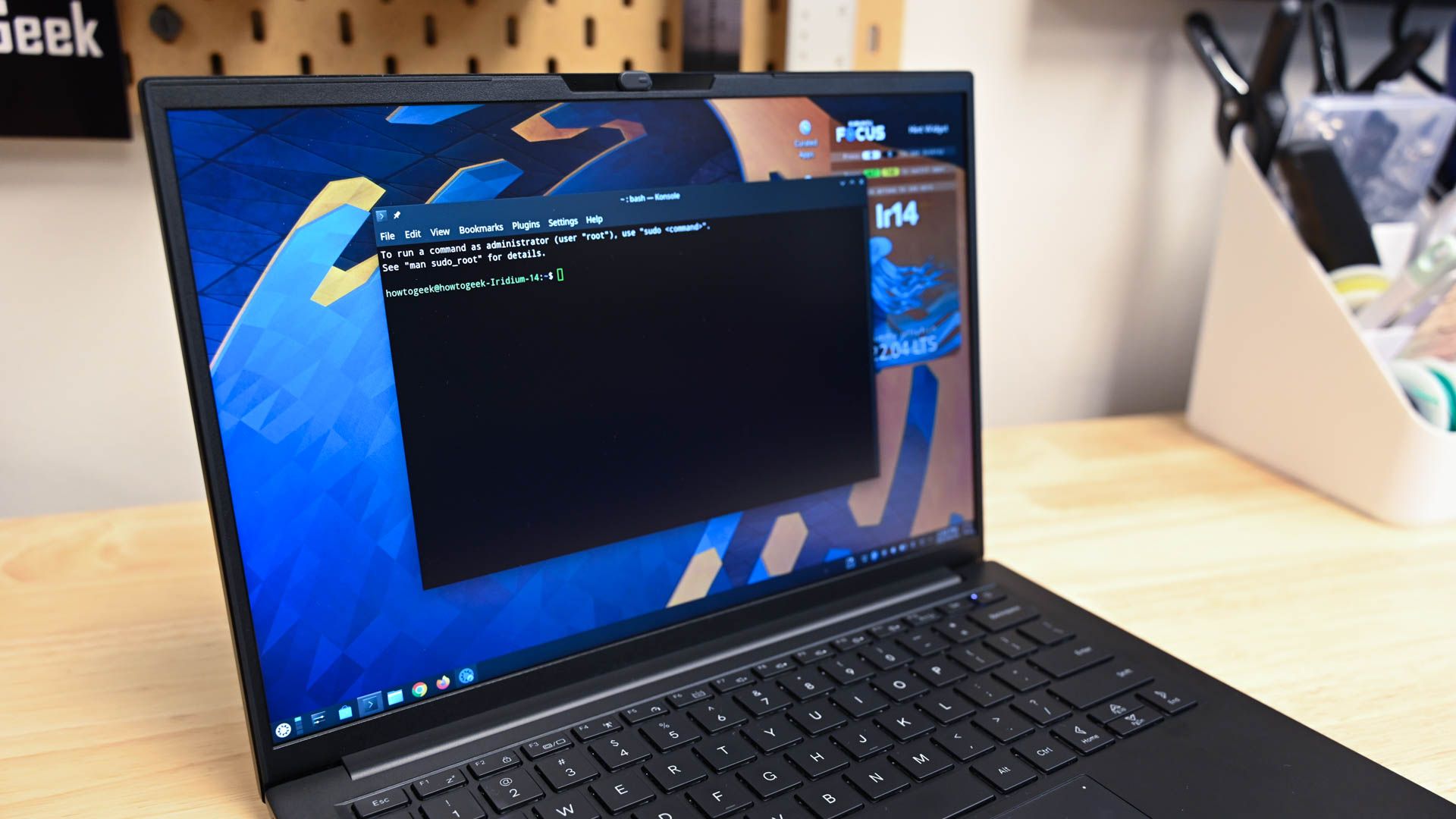
Related
Search the Web (Or Your Favorite Website)
KRunner also has built-in shortcuts for searching the internet with your favorite search engine. Type anything and select the “Web Search Keywords” option, and KRunner will bring up the search results in your default web browser. It’ll use the search engine you select in Plasma Search settings—more on that later.
You can bring up specific alternative search engines using a key phrase, like d: for DuckDuckGo, g: for Google Search, or bing: for Microsoft Bing, followed by your search phrase. It goes beyond standard web search engines, though. You can use wp: to search Wikipedia, and you Linux gamers out there will appreciate the proton: shortcut to search ProtonDB.
If you open up the Web Search Keywords plugin settings, you can see a complete list of searchable websites and their keywords, and you can even make your own. I crafted a custom DuckDuckGo search for How-To Geek by inserting this URL:
https://duckduckgo.com/?q=site%3Ahowtogeek.com+\{@}
Wherever in a URL you put “\{@}”, KRunner replaces with your search terms. I set it to use the shortcut “htg”, and now I can search How-To Geek’s catalog just by typing htg: into KRunner.
Run Quick Calculations
If you often bring up KCalc or another calculator app on your PC for quick calculations, you’ll be happy to learn you can probably skip the app some of the time thanks to KRunner. Just type an equation using standard arithmetic operators, like 100/4 to see the quotient of 100 divided by 4, and KRunner will spit out an answer.
The full extent of KRunner’s calculating abilities are above my math education level, but I know that you can do a lot by typing = to set off an equation and solve it. For example, typing =sqrt(64) will get you 8, the square root of 64.
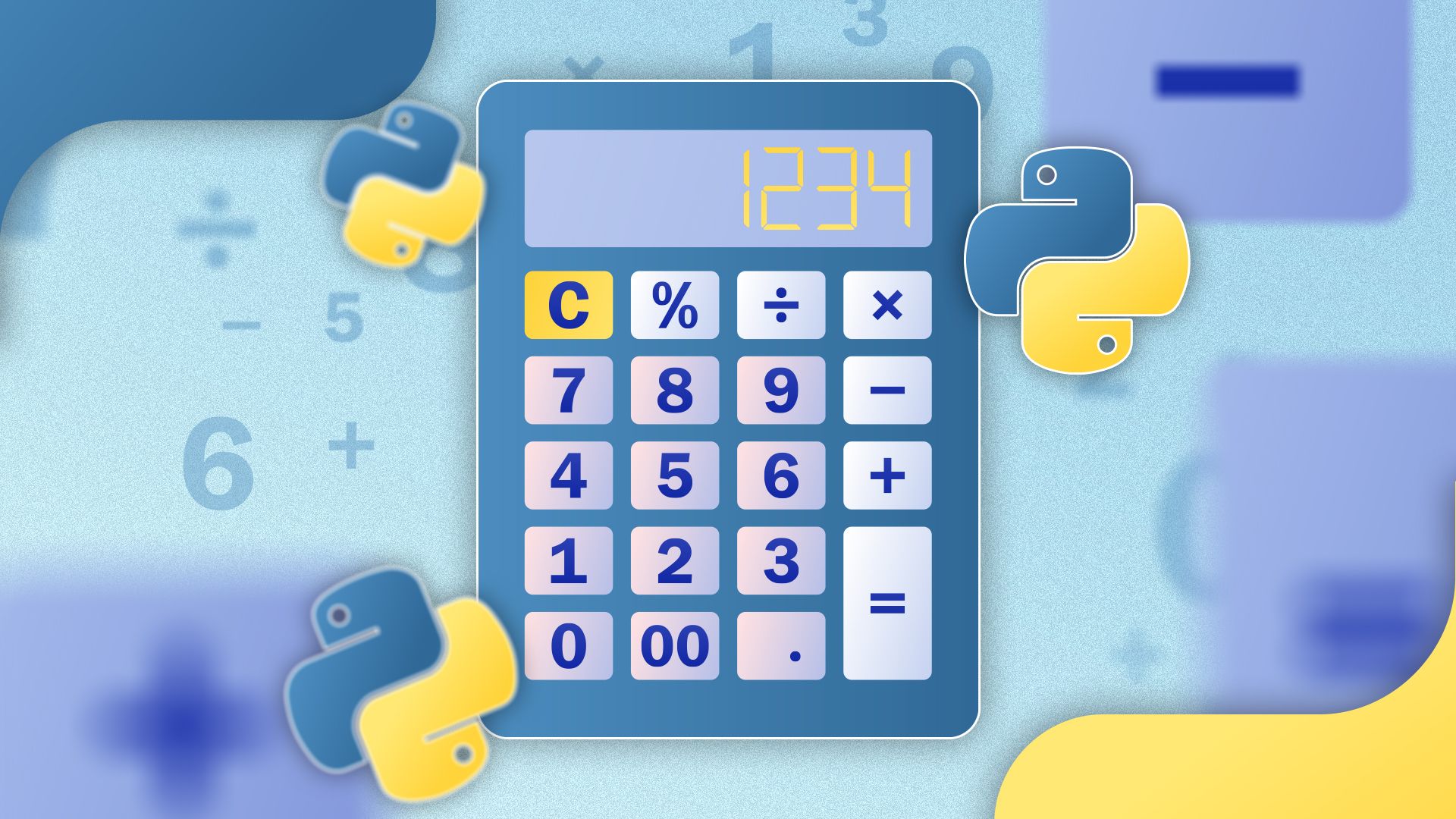
Related
Why You Should Use Python as a Calculator (and How to Get Started)
You might never pick up a handheld calculator again.
How I Customize KRunner to Fit My Workflow
I just listed some specific features, and there are even more if you open KDE’s settings and go to Workspace > Search > Plasma Search. You’ll see a complete list of plugins, along with settings buttons for some of them to bring up a configuration window. Those you can configure, like the web search one I discussed earlier, I recommend adjusting for your purposes.
Chances are, though, you probably don’t have a use for all the Plasma Search plugins. You can speed KRunner up by disabling the functions you don’t need. Just uncheck its box in the list, and KRunner won’t bother putting your searches through their filters. If you’re on a newer version of Plasma, there’s also a star system that lets you prioritize certain plugins over others, so the ones you use most always appear toward the top of search results.
Plasma Search settings apply to both KRunner and the application launcher menu. You can further tweak KRunner itself by clicking the configuration icon to the left of the search field.
I learned from switching between Plasma-enabled Linux distros that the options you see will vary a lot depending on which version of Plasma you’re on. In general though you’re able to change where KRunner appears, how it’s activated, and how the history function works.
These tweaks are what make KRunner stand apart from the application menu launcher, because you can make it default to your last search, or smartly show suggestions based on your history. You can delete or disable your history entirely if you want to keep your KRunner activity private.
KRunner is just one of the many ways you can maximize your productivity and take full advantage of the KDE Plasma environment. If you haven’t already, you should learn how to start using the Activities feature on Plasma.


